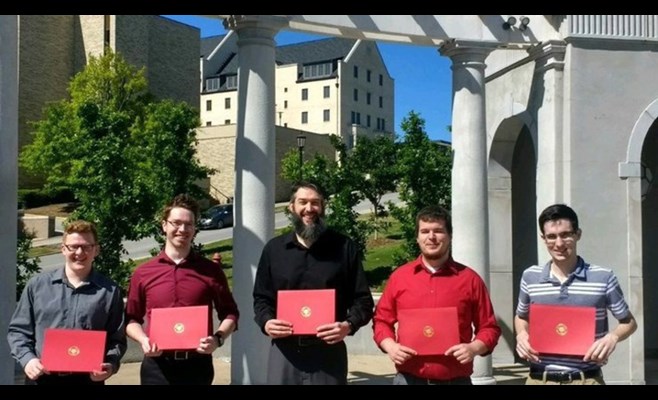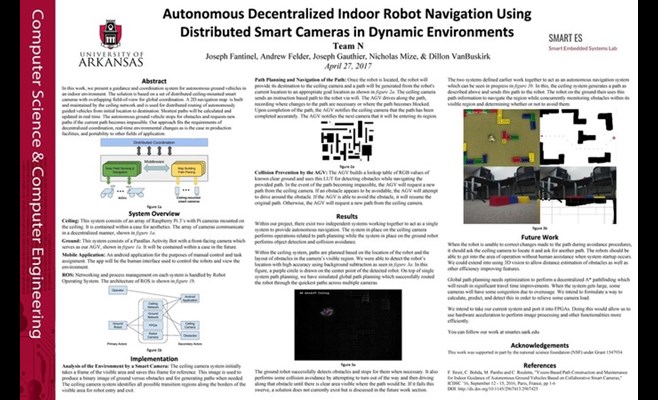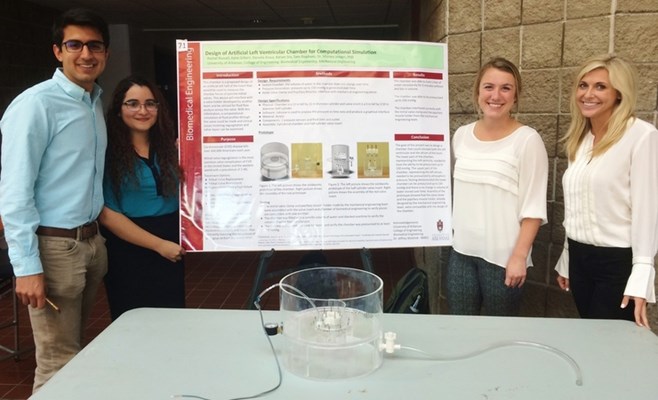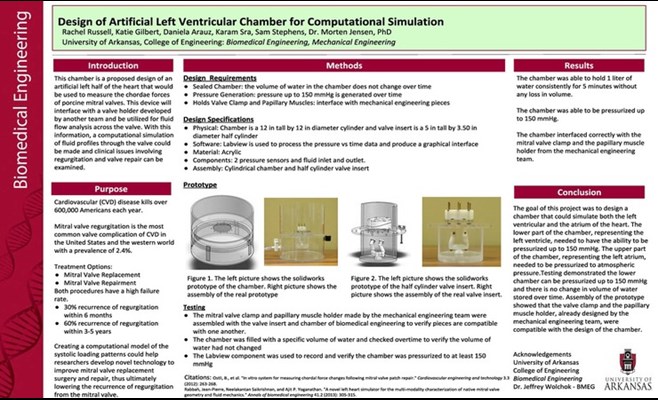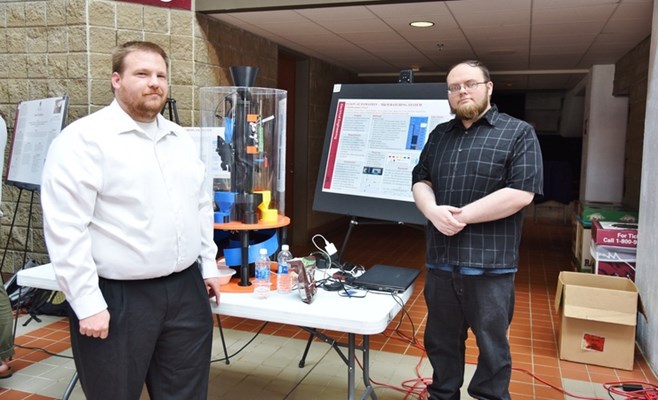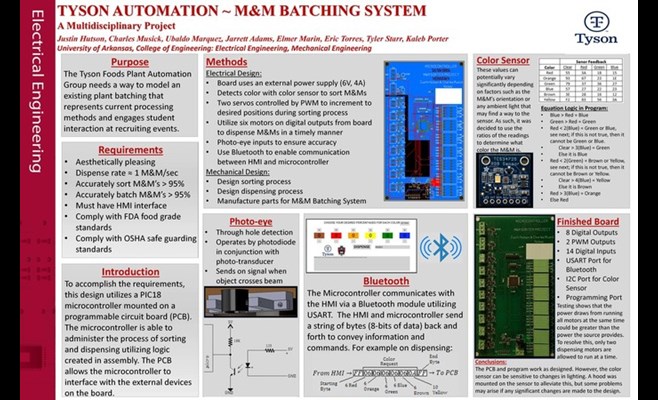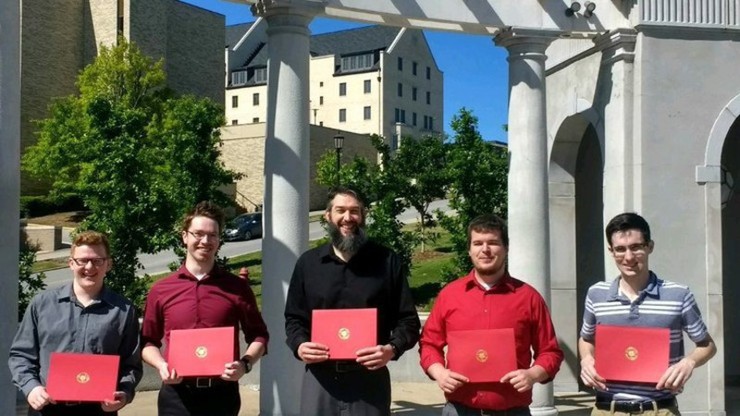College of Engineering Announces Top Senior Capstone Design Posters
On April 27, the Department of Electrical Engineering hosted the 2017 Senior Capstone Design Poster Competition featuring seniors' final projects as undergraduate students. Students from the Departments of Computer Science and Computer Engineering, Biomedical Engineering, Biological and Agricultural Engineering, Chemical Engineering, Electrical Engineering, and Mechanical Engineering presented their posters to students, staff, faculty, and industry during a two-hour event held in Bud Walton Arena.
Posters presented are the result of a year-long project undertaken by students in their senior year and represent the practical and applicable engineering skills developed by students throughout their undergraduate career.
Many posters were an interdepartmental effort while others cooperated with the Fort Smith campus. The total number of posters presented this year were 76, with 11 being industry sponsored by the likes of Black & Veatch, NASA, Tyson, No Magic, HFA, Challenge Technology, and AECC. Other posters were sponsored by engineering faculty or departments.
This year's top poster was presented by Computer Science and Engineering students under a project titled "Autonomous Decentralized Indoor Robot Navigation Using Smart Cameras with ROS for Efficient Adaptability to Arbitrary Environments." Students Joseph Fantinel, Andrew Felder, Joseph Gauthier, Nicholas Mize, and Dillon VanBuskirk worked with Christophe Bobda, computer science and computer engineering professor, to design a simplified autonomous robot system using an array of ceiling mounted cameras to monitor the robot's environment and calculate paths using the visible areas on the ground. Each ground robot used monocular vision to detect obstacles and avoid collision. Current systems rely on large arrays of complex sensors such as motion detectors, distance and range sensors, accelerometers, and gyroscopes. The students' use of mounted cameras greatly simplified the robot's autonomous process. The students won $1,000 to be split among group members.
An interdepartmental effort between biomedical and mechanical engineering took the second-place title with their design of an artificial mitral valve chamber. Students Rachel Russell, Katherine Gilbert, Daniela Arauz, Karam Sra, and Sam Stephens worked with Morten Jensen, associate professor of biomedical engineering, to create a biomechanically correct model of the mitral valve chamber, complete with the ability to withstand the force of two regular water bottles' worth of pressure every time the heart beats, or 100,000 times per day! The second-place team won $750 to be split among group members.
The third-place award went to the Tyson Automation M&M Batching System team, an interdepartmental effort between electrical engineering students at U of A Fort Smith and mechanical engineering students at U of A Fayetteville. Students Juston Hutson, Charles Musick, Ubaldo Marquez, Jarret Adams, Elmer Marin, Eric Torres, Tyler Starr, and Kaleb Porter worked with clinical assistant professor of electrical engineering, Dr. Silke Spiesshoefer and David Albers, mechanical engineering instructor and program coordinator at UAFS, to design and build an M&M batching system that mimics Tyson's process of sorting specific ingredient batches at their feed mills. The project was sponsored by Tyson Foods, Inc. and the resulting M&M batching system will now be used as a recruiting/demonstration tool at STEM and job fairs. The third-place team won $250 to be split among group members.
Contacts
Robert Saunders, assistant department head
Department of Electrical Engineering
479-575-6047, rsaunder@uark.edu
